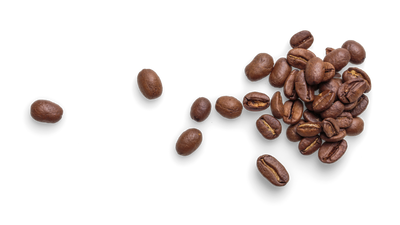The History of Coffee
Jeremy Denny on 30th Apr 2024
A Short Story About Coffee
Once upon a time in the mystical land of Ethiopia, a goat herder named Kaldi noticed something peculiar about his goats. They were dancing around like they had just won the lottery! Curious, Kaldi investigated and found them munching on some strange red berries from a bush.
Being a brave and curious soul, Kaldi decided to give these berries a try himself. Lo and behold, he suddenly felt like he could conquer the world! Energized and buzzing with excitement, Kaldi shared his discovery with a local monk.
The monk, intrigued by Kaldi's tale, decided to brew up some of these magical berries into a concoction. As he sipped the aromatic brew, he felt a burst of inspiration and enlightenment! This wondrous elixir soon spread across the Arabian Peninsula, where it became the beverage of choice for lively debates and philosophical discussions.
Fast forward a few centuries, and coffeehouses were popping up all over Europe faster than you can say "caffeine fix." These vibrant hubs became the birthplace of revolutionary ideas, where poets penned their masterpieces, philosophers pondered the meaning of life, and gossip flowed as freely as the coffee.
Coffee's journey didn't stop there. Thanks to intrepid explorers and adventurous traders, it sailed across the seas to the Americas, where it found fertile soil and thrived. Plantations sprouted like mushrooms after a rainstorm, and soon, coffee became the lifeblood of entire nations.
But wait, there's more! In the 21st century, coffee underwent a hipster makeover. Suddenly, it becomes an edible art form. Roasters are chemist and crafters, baristas became the new rock stars, and coffee shops turned into trendy havens for the caffeine-addicted masses.
The Coffee “Family Tree”
1.Origins in Ethiopia: Coffee's story begins in Ethiopia, where legend has it that a goat herder named Kaldi discovered coffee around 850 AD. He noticed his goats becoming more energetic after eating the berries of a certain tree, leading him to try them himself.
2.Spread to the Arabian Peninsula: Coffee cultivation expanded from Ethiopia to the Arabian Peninsula, particularly in Yemen, where it was cultivated and traded. By the 15th century, coffee was being grown in the Yemeni district of Arabia, and the practice of roasting and brewing coffee beans for consumption began.
3.Coffee Houses in the Arab World: Coffee became an integral part of Arab culture, with the first coffeehouses, called qahveh khaneh, appearing in cities like Mecca and Constantinople (modern-day Istanbul). These coffeehouses served as social hubs where people gathered to drink coffee, discuss politics, and engage in intellectual discourse.
4.Introduction to Europe: Coffee was introduced to Europe in the 16th century, initially through trade routes established by Venetian and Ottoman merchants. Coffeehouses began to spring up across Europe, becoming centers of social activity and intellectual exchange, similar to their counterparts in the Arab world.
5.Coffee and Colonialism: The spread of coffee cultivation was closely linked to European colonialism. European colonial powers such as the Dutch and the French established coffee plantations in their colonies, particularly in regions with suitable climates such as the Caribbean, Central and South America, and Southeast Asia.
6.Coffee in the Americas: Coffee was introduced to the Americas in the 17th century, with the first coffee plant brought to the island of Martinique by the French. Coffee cultivation thrived in regions like Brazil, Colombia, and Central America, leading to the rise of coffee as a major commodity crop.
7.Industrialization and Mass Production: The Industrial Revolution in the 19th century brought significant changes to the coffee industry, including the development of machinery for processing and roasting coffee beans, as well as the establishment of large-scale plantations.
8.Coffee Culture in the 20th Century: Coffee consumption continued to rise globally throughout the 20th century, with the proliferation of coffee shops, brands, and brewing methods. Instant coffee became popular for its convenience, while espresso and specialty coffee gained traction among connoisseurs.
9.Fair Trade and Sustainability: In recent decades, there has been growing awareness of ethical and environmental issues within the coffee industry. Initiatives such as fair trade and direct trade aim to ensure that coffee farmers receive fair prices for their crops and promote sustainable farming practices.
10.Third Wave Coffee Movement: The "third wave" of coffee, which emerged in the late 20th and early 21st centuries, emphasizes quality, sustainability, and traceability. This movement focuses on the craft and artistry of coffee production, with an emphasis on single-origin beans, small-batch roasting, and alternative brewing methods.
The Future of Coffee
The future of coffee is likely to be shaped by various factors, including changing consumer preferences, advances in technology, sustainability concerns, and the impacts of climate change. Here are some potential trends and developments to consider:
- Sustainable Practices: With increasing awareness of environmental and social issues, there's growing demand for sustainably sourced coffee. Consumers are seeking assurances that their coffee is produced in ways that minimize environmental impact, support fair labor practices, and promote biodiversity. This trend is driving initiatives such as Fair Trade, Rainforest Alliance, and organic certification, as well as efforts to promote agroforestry and regenerative agriculture practices.
- Climate Change Adaptation: Coffee cultivation is highly sensitive to climate change, with rising temperatures, changing rainfall patterns, and extreme weather events posing significant challenges to coffee production. In response, coffee farmers are adopting climate-smart agricultural practices, such as planting shade trees, using drought-resistant coffee varieties, and implementing water conservation techniques. Research into heat-resistant and disease-resistant coffee varieties is also underway to help farmers adapt to changing conditions.
- Technological Innovation: Advancements in technology are transforming various aspects of the coffee industry, from precision agriculture and crop monitoring to coffee processing and brewing methods. For example, digital tools and data analytics are being used to optimize farming practices and improve yields, while innovations in coffee brewing equipment and coffee-making techniques are enhancing the quality and consistency of coffee beverages.
- Alternative Coffee Varieties: As traditional coffee-growing regions face challenges from climate change and disease, there's growing interest in exploring alternative coffee varieties that are better adapted to changing conditions. This includes rediscovering heirloom and indigenous coffee varieties, as well as experimenting with new hybrids and genetic modifications to develop coffee plants with desirable traits such as disease resistance, flavor profiles, and yield potential.
- Changing Consumer Preferences: Millennials and Gen Z consumers are driving shifts in coffee consumption habits, favoring specialty coffee, artisanal roasts, and experiential coffee experiences. This trend is fueling the growth of specialty coffee shops, coffee festivals, and direct-to-consumer coffee subscription services. Additionally, there's increasing demand for plant-based alternatives to dairy milk, such as oat milk and almond milk, as well as functional ingredients like CBD-infused coffee and adaptogen heavy foods like Lions mane mushrooms
Overall, the future of coffee is likely to be characterized by a continued focus on sustainability, innovation, and quality, as well as greater awareness of the interconnectedness between coffee production, environmental stewardship, and social responsibility. By addressing these challenges and opportunities, the coffee industry can work towards a more resilient and equitable future for coffee farmers, consumers, and the planet.

